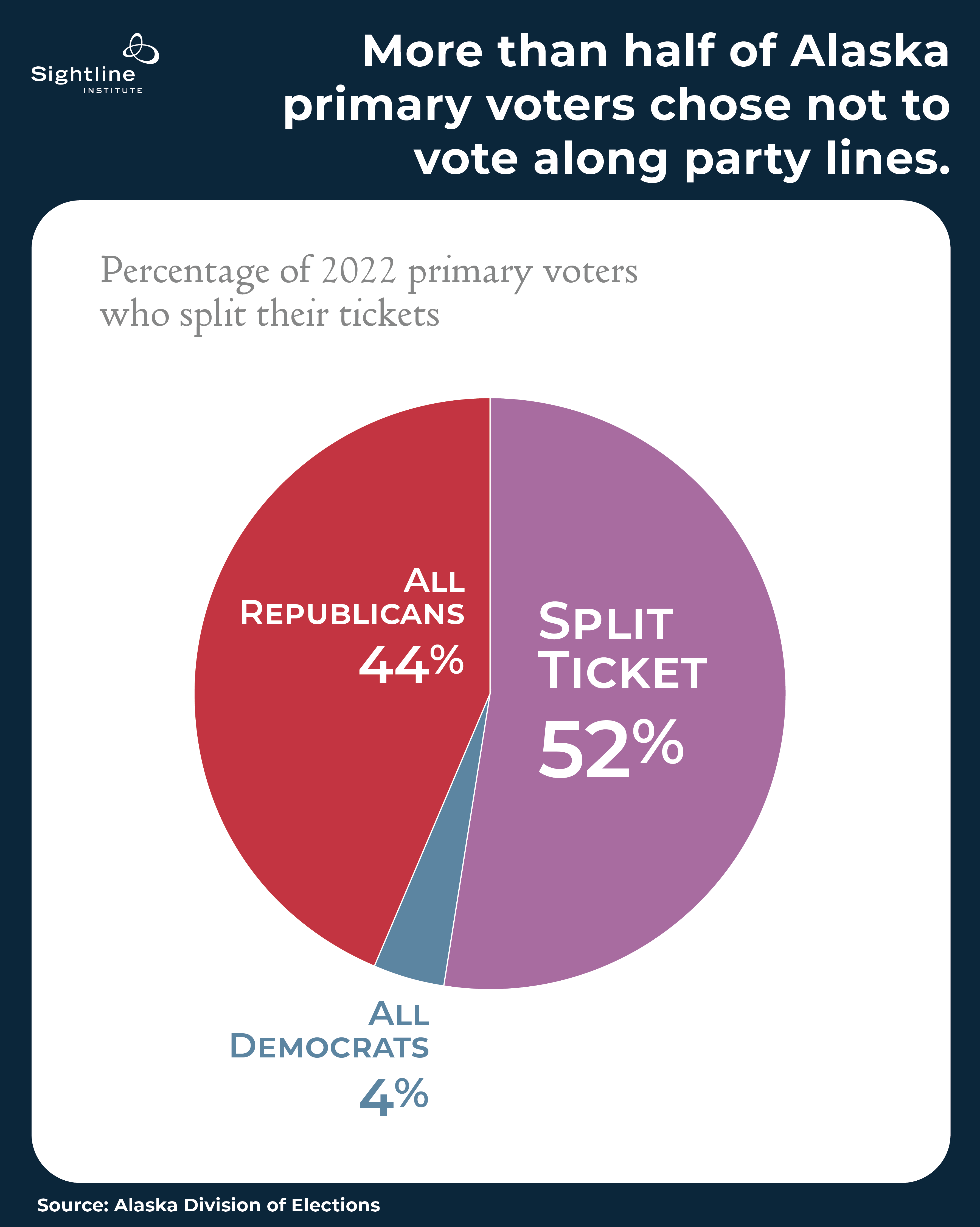Last month, I caught the new feature-length documentary Majority Rules at its theatrical release in New York City’s East Village.
The film was riveting—and not just because it made my researcher heart flutter to see a story about election reform projected on the same screen as the blockbusters. The story follows Alaskans’ vote to upgrade their election system to an all-party open primary combined with a ranked choice general election. The road to implementation in 2022 is packed full of surprising alliances, fierce pushback from political parties, and a last-minute special election. After Alaska’s longest-serving Congressman unexpectedly dies, dozens of candidates jump into the race—including former Governor Sarah Palin—and they learn how these new voting systems changed the unwritten rules of campaigning.
It’s an in-depth chronicle of the reform struggle in Alaska, a story that unfolds as a gripping drama, but leaves you with a promising model for shoring up democratic systems and civic norms that otherwise feel frayed. There are systems that mean the majority actually rules—and Alaska is getting it right.
Where to see ‘Majority Rules’
There are already a few scheduled showings in cities across the Northwest:
- July 24: Tacoma, WA
- August 11 & 13: Bremerton, WA
- October 2: Walla Walla, WA
More information on showings can be found on the film’s website.
Majority Rules is written and directed by AJ Schnack (Caucus, Convention) and produced by Unite America’s Nick Troiano, whose new book The Primary Solution was recently excerpted on our website.
Alaska’s reformed voting systems
Sightline’s democracy and elections team has studied Alaska’s model in detail. Alaska is unique, politically, with the highest share of independent voters in the country.
I spent part of this spring poring over the state’s voter records alongside my Anchorage-based colleague Jeannette Lee. The two of us found that over half of voters in the 2022 Alaskan midterm primaries split their tickets between candidates from across the political spectrum.
In a separate analysis, Jeannette and I also found that voter participation in that 2022 election reached a decade high.
After a single election, making strong claims about how nonpartisan open primaries affected turnout in Alaska seems premature. But Alaska’s next nonpartisan open primary on August 20, 2024, may provide additional clarity.
The release of Majority Rules comes at a pressing time as Alaskans decide whether to uphold the system they approved in 2020’s Ballot Measure 2.










